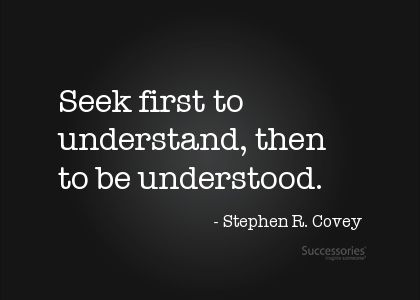It’s happened to all of us. No matter how productive we usually are, even the most consistent high-performing employee struggles from time to time. So as a manager, how do you help your team member get out of their rut?
Start with encouragement
Over the years I have had several opportunities to engage with team members on productivity issues. Hopefully you’re having regular one-on-ones and have developed the kind of feedback culture that makes sharing truth (with kindness and grace) a cultural norm.
Help your struggling high-performers get back on track with this FREE Quick Reference Guide
In that context, you should begin your conversation with honesty. Something like:
“I’ve noticed you’ve been struggling a bit lately. Let me start by saying that I SO appreciate your contribution to the team, and how you consistently give it your all! You’re such a strong contributor (be specific). I really want to understand what’s going on – I’m here to support you.”
IMPORTANT: There’s a reason I didn’t start with “You’re doing a great job.” It’s been my experience that when someone starts there and adds a “but” that it completely devalues the encouragement. And worse, the next time you encourage them, they’ll be waiting for the “but”. Your ability to be honest in a kind way will be rewarded by building more trust in your relationship.
Seek understanding
Steven Covey, in Habit 5 of his book Seven Habits of Highly Effective People, entitles the chapter “Seek First To Understand, Then to Be Understood”. While I doubt he is the originator of the concept (in fact, it may originate with this bible verse), he put something in slogan form that has been tremendously helpful to me over the years. In a world that consistently shouts in an attempt to be understood, asking questions and seeking understanding will be like fresh air to most. To a struggling employee, it may be a lifeline.

It’s important to be careful when diving in, especially if they know they’re under-performing but trying to make the best of it. But keep an eye out for some things that may be tripping them up. Sensitively ask them how they’re doing, and if the relationship can handle it, ask if there are factors they’re aware of that are weighing on them. You don’t even need to add “…because I see you under-performing at work.” That can come later in solution mode. Right now you’re in discovery mode.
Here are some possible obstacles they’re facing:
- At work:
- Poor communication with teammates
- Lack of training on an important skill
- Lack of missional clarity
- Over-challenging workload
- Under-challenging workload
- Bad fit for their gift set
- No clear professional path forward
- Compensation issues
- In their personal life:
- Struggling marriage
- Difficulties with children
- Financial difficulties
- Dealing with aging parents
- Personal health issues
- Health issues of a loved one
This list is obviously incomplete, but perhaps it can serve as a catalyst to help you think of questions you can ask to get the the conversation headed in the right direction.
Some general questions to get you started:
- How have you been lately?
- What activities help you unwind and destress after work?
- How is your work/life balance? Is there a way to make it better?
- What are you excited about or looking forward to either at work or outside of work?
- What went well this week?
- Is there anything else that you’d like me to ask you?
- On a scale of 1 to 5, where 5 is “great,” how would you rate your energy level in the last week? Why?
- How’s life going for you right these days?
- Is there anything we could change in your world that would improve your personal life?
When appropriate, drill down further
Once you have worked through some general questions, and your team member can clearly see you understand their situation, then you can drill down a little further into how it is affecting their work. But again…seek understanding. Here are some questions that may apply. Don’t ask them all, but pick a couple that are appropriate to their situation:
- Are there any obstacles keeping you from meeting your short term priorities and long-term goals?
- Are there specific things that I can do to help you be more effective? Are there any obstacles that I can remove?
- On a scale of 1 – not productive, to 5 – killing it, how would you rate your productivity lately? What has gone well? What could have been better?
- What resources do you need to help your productivity right now?
- What are the biggest bottlenecks or blockers that keep you from being even more productive?
- In what area can I provide some confidence boosting clarity as you move forward?
Help your struggling high-performers get back on track with this FREE Quick Reference Guide
Moving forward with high-performing employees
Once you have a clear understanding of the issues, you can start asking about solutions. Still, be verrrrry careful here. Some issues, particularly personal difficulties, are probably off limits. Don’t share your advice about fixing those problems. Instead, show support while figuring out how to make work better in the midst of the trial they’re facing.
Some of the questions outlined above may get you there, but if not, ask specifically what you can do to help. If you get a “there’s nothing you can do” regarding personal issues, leave it there and let them know you’re supportive and available.
Start with small, easy wins.
Now that you have a shared understanding of the issues, if the problems are work-related begin to brainstorm solutions with your team member. Since they’re already a used to being a high-performer, they know what it feels like to win. Helping them get there by choosing some small attainable goal will get their juices flowing again, and will serve as a nice jump start to their return to form.

IMPORTANT: Remember, a solution they come up with will give them more goal ownership than one you come up with. So work “with” them, not “at” them.
Understand when they’re “back on their feet” again
For high-performing employees it’s not easy to struggle, and it’s even harder to admit it and get some help. So when they’re “back” (even if they’re not all the way back), acknowledge that you’re seeing their improvement and that they’re “looking like themselves” again. Then, let them stand on their own when they’re ready.
Several years ago when traveling with co-workers I had a Meniere’s attack. I had been driving my team for three hours and was fine, but when I got out of the car I experienced severe vertigo. As we walked through the airport I needed my two friends to walk even a few steps. It was a long, laborious trek through the airport.
I got on the plane and began wondering how I was going to get home. About halfway through the flight I felt my symptoms subside, and by the time the plane landed I was perfectly fine again. I easily grabbed my luggage, walked to my car and drove home.
I already felt uneasy about the burden I had been on my friends, but if they had insisted to continue helping me long after I needed it I would have felt even worse!

So it is with high-performing employees who struggle. My experience is that they’re willing to accept help as long as they need it, but as soon as they’re “back” they don’t want to be treated as if they’re still struggling.
Help your struggling high-performers get back on track with this FREE Quick Reference Guide
Wrapping Up
High-performing team members are the life blood of your organization, but all of us struggle at one time or another. By seeking to understand where the struggle is coming from and collaborating on a solution, you’ll see them restored quickly. And the added bonus? You’ve likely built a greater level of trust, too!


